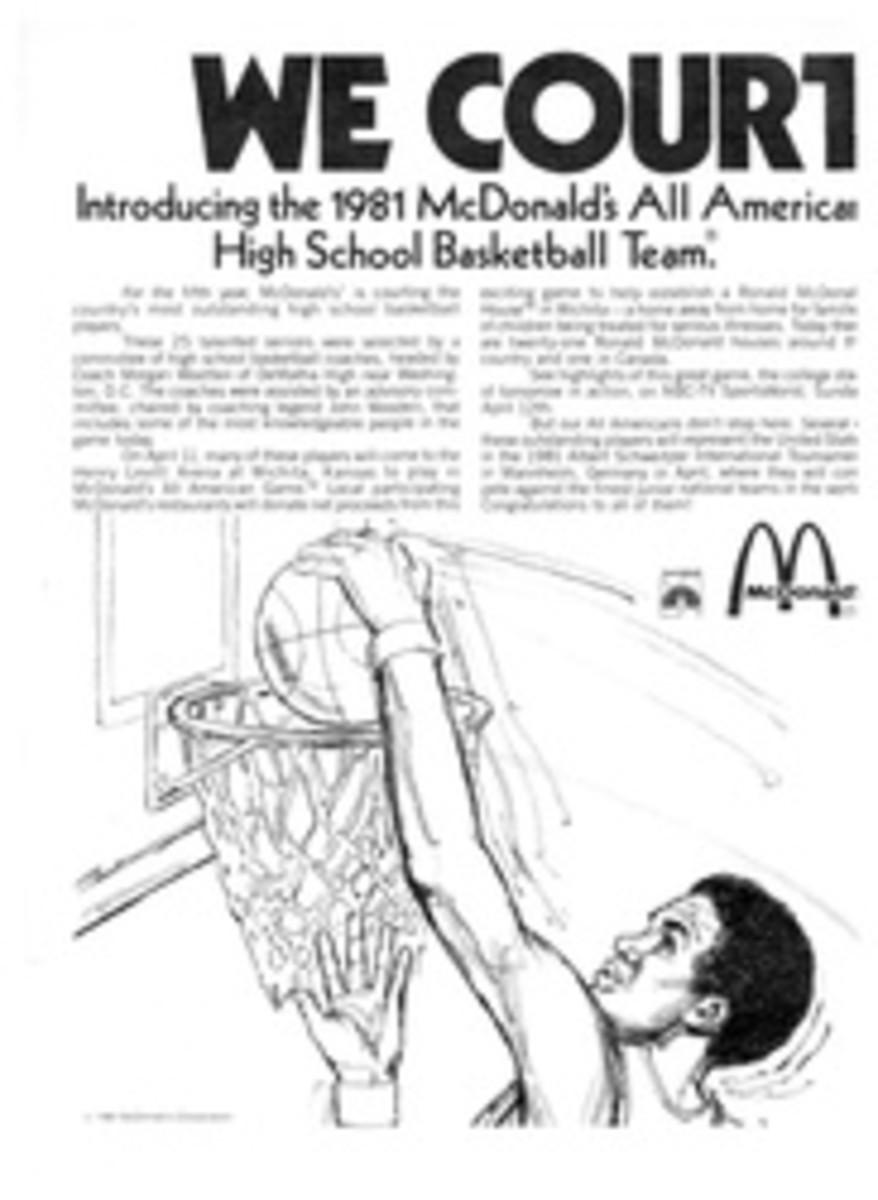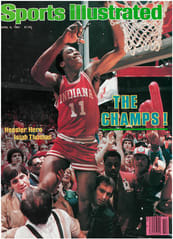
Trying time for Big T
If Terrible (or Tempestuous, Tortured) Tom Weiskopf, a/k/a Big T, is missing from the Masters Golf Tournament next week for the first time in 14 years—and that will be the case unless he wins at Greensboro this week—it will somehow seem as if the wisteria has forgotten to crawl up the big oak on the Augusta National veranda. In other words, things won't be the same.
In many ways, Weiskopf has been as much a part of the Masters as Jack Nicklaus' golden locks or a bank of azaleas along a distant fairway. Augusta is one of the places, and there are many, where Weiskopf makes news whether he is seriously contending for a title or just creating a mild storm among the flora and fauna.
Until last year Weiskopf had perennially been among the favorites at Augusta because of his booming tee shots and his elegant all-round game, and he had added much to the drama of past Masters by finishing second four times and twice coming within a single putt of forcing a playoff for the green jacket. It was a rare day when Weiskopf's name was not posted on the Masters leader board. But the last three years have been relatively bad ones for him—bad compared to the glories of the past. All of the frustrations of his bumpy career seemed to come out on a single hole in the first round of the 1980 Masters—the par-3 12th, on which he made a whopping 13. Unsurprisingly, he eventually missed the cut.
For years Weiskopf had usually qualified for a return to Augusta by winding up in the top 24 in the Masters itself. When he failed in 1980, there were several other ways for him to get back. He could have finished in the top 16 at the U.S. Open; he wound up 36th. He could have finished eighth or better in the PGA Championship; he tied for 10th. That left just one way—to win a golf tournament. Going into the Heritage last week on Hilton Head Island, he'd been shut out.
What would he do if he didn't make it to Augusta? "I've got a friend who says he can get me a job driving a truck for four dollars an hour," Weiskopf said.
It was the pre-1973 Weiskopf who gained for himself a lifelong reputation as a "bad boy." He was not the club-thrower his idol Tommy Bolt was, but neither was he the leading P.R. charmer in the clubhouse. Always he spoke with honesty, no matter to whom. If he didn't like a golf course, a scorer, a ruling, a gallery marshal, a newspaper story, a tournament sponsor, he said so—and he frequently left town without leaving love letters and thank-you notes.
Then in 73 he suddenly became the greatest golfer in the world. It was a year that saw him reach his true potential, a year in which he won his one and only major championship and practically everything else. It was a year that made him rich and, at times, even mellow.
In '73 Weiskopf conquered both Troon and Johnny Miller in a brilliant head-to-head duel to win the British Open. That year he won four other tournaments on the PGA Tour, plus the old World Series of Golf, plus the South African PGA. Over an incredible stretch of 12 tournaments he never finished worse than sixth.
"That's the only time I ever really putted good," he said last week. "I'm as good a ball-striker as I ever was. In 73 I guess you can say I was looking like whatever it is that Tom Watson has become. Maybe I let up after 73, I don't know. I've never practiced much. I hate practice. But I'll tell you one thing about chasing the little white ball. Make what you want to out of it, but it's all on the greens—and half of that's in your head."
Weiskopf's head has been a subject of discussion for years. It came under its severest scrutiny in midsummer of 1979, when he hit the lowest point of his career. He had moved to Paradise Valley, Ariz. and built a home for his wife, Jeanne, and his two children that featured, among other things, seven bathrooms. He concentrated on the outdoor life, bought a ski cabin and invested in a bar. Although he had moved to Arizona from Ohio for better golfing weather, he seldom practiced. He did play a social brand of tennis in long pants. "I think I thought I was retired," he says.
What started waking him up was a pitiful performance that year in the British Open. He spent most of the week around the hospitality tents, used his putter on some approach shots, missed the cut and generally behaved as if he were an entertainer and not a former holder of the championship.
Referring to Weiskopf's unorthodox use of his putter, a friend asked, "Why'd you do that, Tom?"
To which Weiskopf replied, grinning, "It's the best way to keep the ball under the wind."
Late in the afternoon on the day of the second round, he found himself sitting around drinking with a group of friends and business associates. One of the people present was Sue Barker, the tennis player. "Do you know Nastase?" Weiskopf asked her. She said she did.
Weiskopf borrowed a pen and a piece of paper and started writing something. "I love that guy, although I don't know him. He's colorful," he said, handing Barker the note. "Give him this for me." Weiskopf's note said: "Dear Nasty: Keep up the good work. Sports needs us. Sincerely. Tom Weiskopf."
As the summer of '79 wore on, Weiskopf was forced to get serious about his golf game. For the first time in years he was confronted with the very real possibility of not making the PGA Tour's Top 60, of not being an exempt player.
So he disciplined himself into going back to work, and he played in the last seven events on the tour during a time of the year when in the past he'd always gone hunting for sheep or elk or Scotch or vodka. He built his earnings for the year up to nearly $77,000 and finished 48th, good enough to survive, but far below where he should have finished.
He improved a bit last year, inching up to 47th place with $88,260, but Weiskopf insiders will remember 1980 as the Year of the Wig. A group of Japanese wigmakers asked him, somewhere along the way, to wear a toupee in a couple of Japanese golf tournaments. He would be paid handsomely for it, and he could certainly use the money, because his golf earnings had dropped off more drastically than his style of living.
"I didn't want to wear a rug," he said. "I made up a fantastic figure, but they said O.K. I tripled that, and they said O.K. again. They even said I didn't have to play golf in it, but just get my picture taken and then wear a cap in the tournaments so nobody could tell I didn't have it on. I put the thing on and looked at myself in the mirror and I thought about the money. You know what I did? I said forget it. It wasn't me."
Weiskopf was responsible for perhaps the best call for a ruling that ever occurred on the tour. A few years ago at the old Greater Jacksonville Open, having tried to cure a case of the flu by walking into a Drambuie cloud, Weiskopf overslept one morning, having slept a total of 30 minutes, and barely made his tee time.
His friend and fellow pro, Ed Sneed, drove him to the Deerwood course in the manner of Richard Petty at Daytona, and another friend met him on the first tee with his golf shoes. Weiskopf's tee shot on No. 1 went 60 yards before it struck a pine. His tee shot on No. 2 went into the rough. Weiskopf sat down under a tree and dealt with his nausea and asked for a ruling. Two groups played through.
Eventually, a tournament official, an old friend, came riding up on a golf cart prepared to tell Weiskopf whether or not he was entitled to a free drop from his lie. "What's the problem, Tom?" he inquired, looking at Weiskopf's golf ball.
"Listen," said Weiskopf, finding it difficult to stand up and keep his balance, "can you get me an egg sandwich?"
Weiskopf went on to shoot a 69 that day, having, as he does, the constitution of a rhinoceros and a fine natural golf swing. He likes to look back on it as the "greatest round a dead man ever shot."
Weiskopf will play other great rounds. He is only 38 and he may yet do all of the things he has been expected to do all these years.
But what if he never does? What if all that tremendous ability is never rewarded with an armload of major championships? How will he feel about it? The question was put to him last week at Hilton Head, where Bill Rogers, a player with less potential, was winning his second PGA tournament, and Weiskopf, the picture golfer, was finishing sixth.
"Let me answer it this way," said Big T, being nothing else than himself. "Who gives a damn?"
Well, right now, only those of us who would miss him at Augusta.
PHOTO
The path to Augusta didn't go via Hilton Head.
THREE PHOTOS
Windblown bunker sand irked Weiskopf less than not being able to win in his next-to-last chance.

